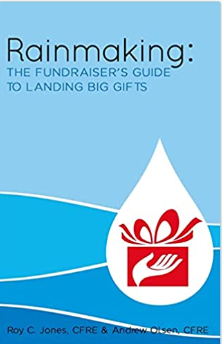Cultivating major gifts is never easy. There is not a “one size fits all” or cookie cutter approach. I have found that the best way to manage the moves management process is by grouping my supporters into three seperate types of activities or categories: (1) Friend-raising; (2) Fund-raising; (3) Advisor-raising.
The term “friend-raising” has been popularized in our industry as an interchangable substitute for “fundraising”. However, nothing could be further from the truth. Friend-raising happens with new major donors and with supporters who have recently upgraded their giving or been identified as a friend with high gift capacity. This is the first level of fund development in the moves management process. You are building trust, rapport and identifying areas of interest shared by your supporter. Major donors at this level of moves management will increase giving based upon their connection with the fundraiser. Friendship and trust matter! Giving growth happens organically as mutal rapport builds.
The next level in the moves management proces is where real fundraising begins. That is why I call it the “Fund-raising” level.. the development professional grows giving by making strategic “asks” based upon the donor’s interest, desires and previous giving amounts. The skilled fundraiser identifies where the donors heart is and makes a strategic ask designed to grow giving levels above the previous year. Most importantly, the fundraiser positions herself as the donors friend and giving advisor, setting the stage for the next level of the moves management process.
The final level of relationship building is what I call “Advisor-raising”. After a year or two of strategic asks at the fundraising stage, the supporter begins to see the development professional as their giving advisor. They anticipate and look forward to an annual planning meeting to discuss the impact of their last gift and the options available for their next gift.
A veteran development pro with 3 to 5 years at a specific charity should have at least 50% of their caseload composed of “Advisor-raising” level relationships. Based upon the number of new major donors a charity procures each year, the percentage can fluctuate. The goal would be to have a balanced caseload, but to never let the number of new “friend-raising” relationships to exceed one-third of the total.
A full time major gift officer should conduct an average of between 3 to 5 visits a week. That equates to 12 to 15 visits a month; 145 to 180 meetings a year. Devlopment professionals should visit approximately 75 percent of their portfolio each year. So if the minimal annual meeting goal is 150, the maximum number of assignments to a gift officer should never exceed 200 people. Approximately one-third of a gift officer’s portfolio should be in the solicitation phase at any time of the year.
Remember, the secret to successful major gift fundraising is measuring the activity, not counting the money. Trust me when I tell you that if the activity is being measured and the major gift staff is held to a standard of activity HUGE SUMS OF CASH WILL FOLLOW. Take a look at the top end of your donor file. How many financial supporters are you friend-raising, fund-raising or advisor-raising?


